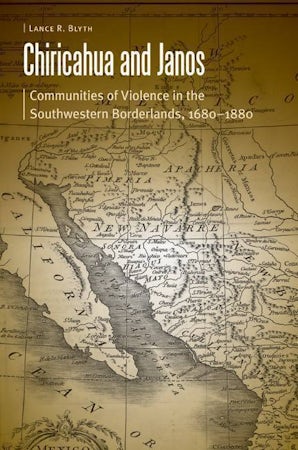
Borderlands and Transcultural Studies Series
296 pages
17 maps, 1 glossary, index
July 2012
978-0-8032-4172-5
$30.00 Add to Cart"A thesis-driven book backed by detailed narratives."—Wayne E. Lee, American Historical Review
“At a time when western historians have rediscovered the borderlands to great effect, Chiricahua and Janos presents a valuable new framework for thinking about Spanish-Indian relations in the American Southwest. It is a substantial contribution to the fields of Borderlands and Native American history.”—Karl Jacoby, author of Shadows at Dawn: A Borderlands Massacre and the Violence of History
“Blyth is concerned with the nexus of violence and cultural relations and, similarly, has a keen eye for Indians’ perspectives….Blyth has given us another example of the violent peace that cultural differences and local goals can produce.”
List of Maps
Preface
1. Communities of Violence: Apaches and Hispanics in the Southwestern Borderlands
2. Refugees and Migrants: Making Hispanic-Apache Communities, 1680-1750
3. Fierce Dancing and the Muster Roll: Campaigns, Raids, and Wives, 1750-1785
4. A Vigilant Peace: Families, Rations, and Status, 1786-1830
5. War, Peace, War: Revenge and Retaliation, 1831-1850
6. Border Dilemmas: Security and Survival, 1850-1875
7. Communities' End: Persecution and Imprisonment, 1875-1910
Conclusion: Borderland Communities of Violence
Acknowledgments
Notes
Glossary
Bibliography
Index